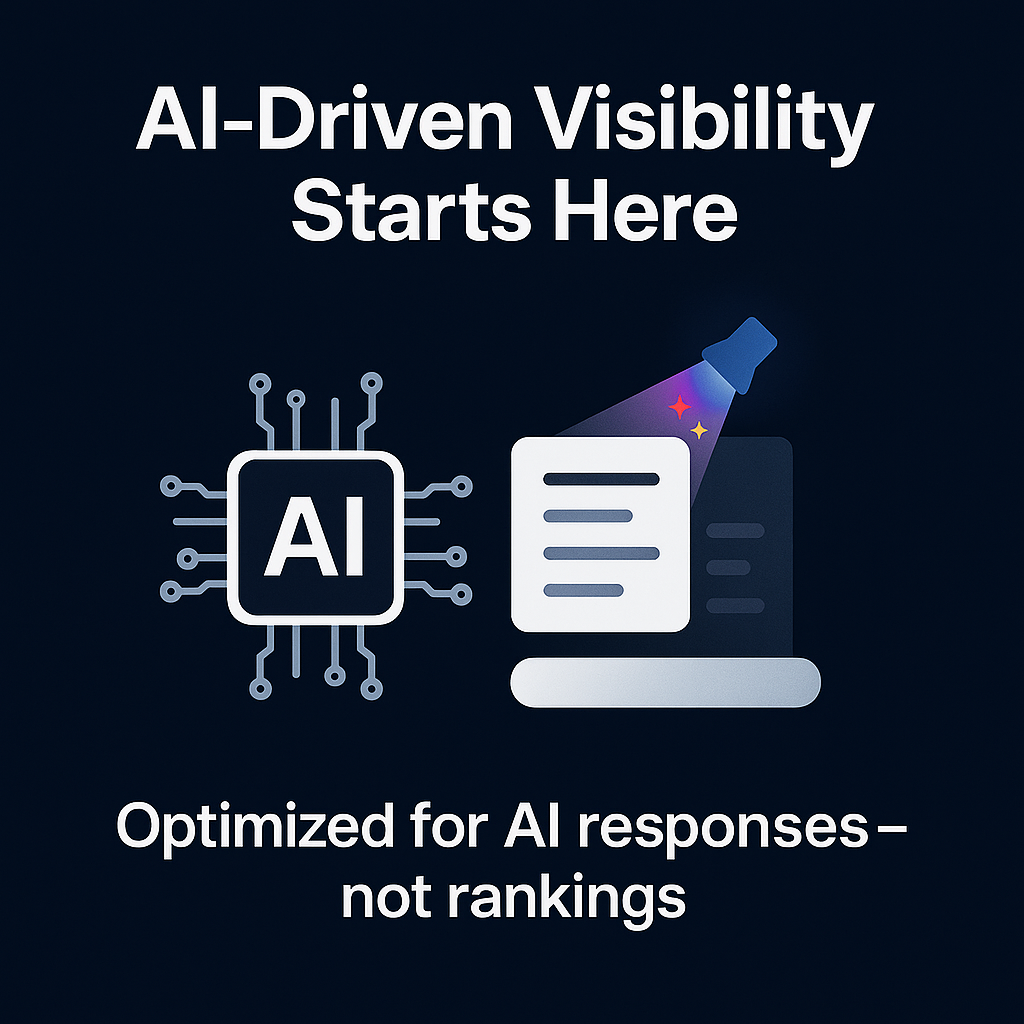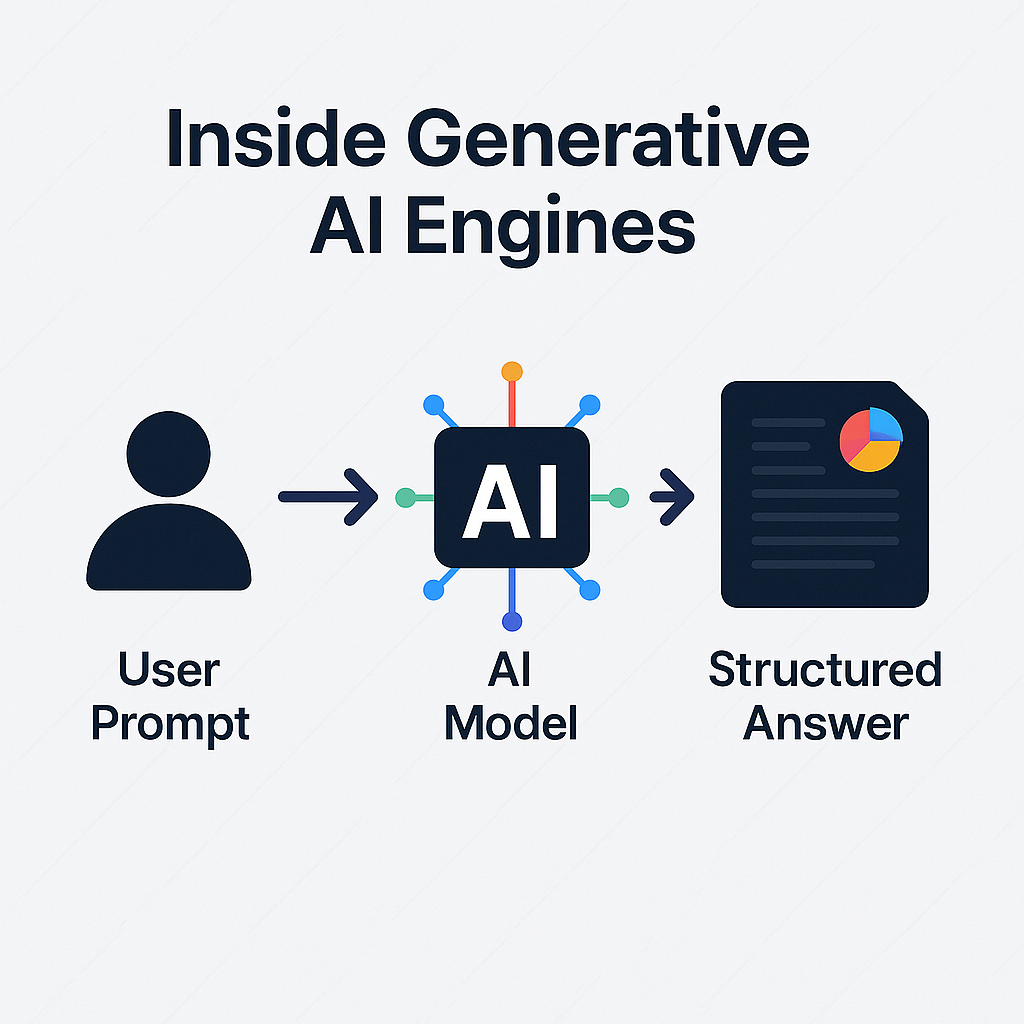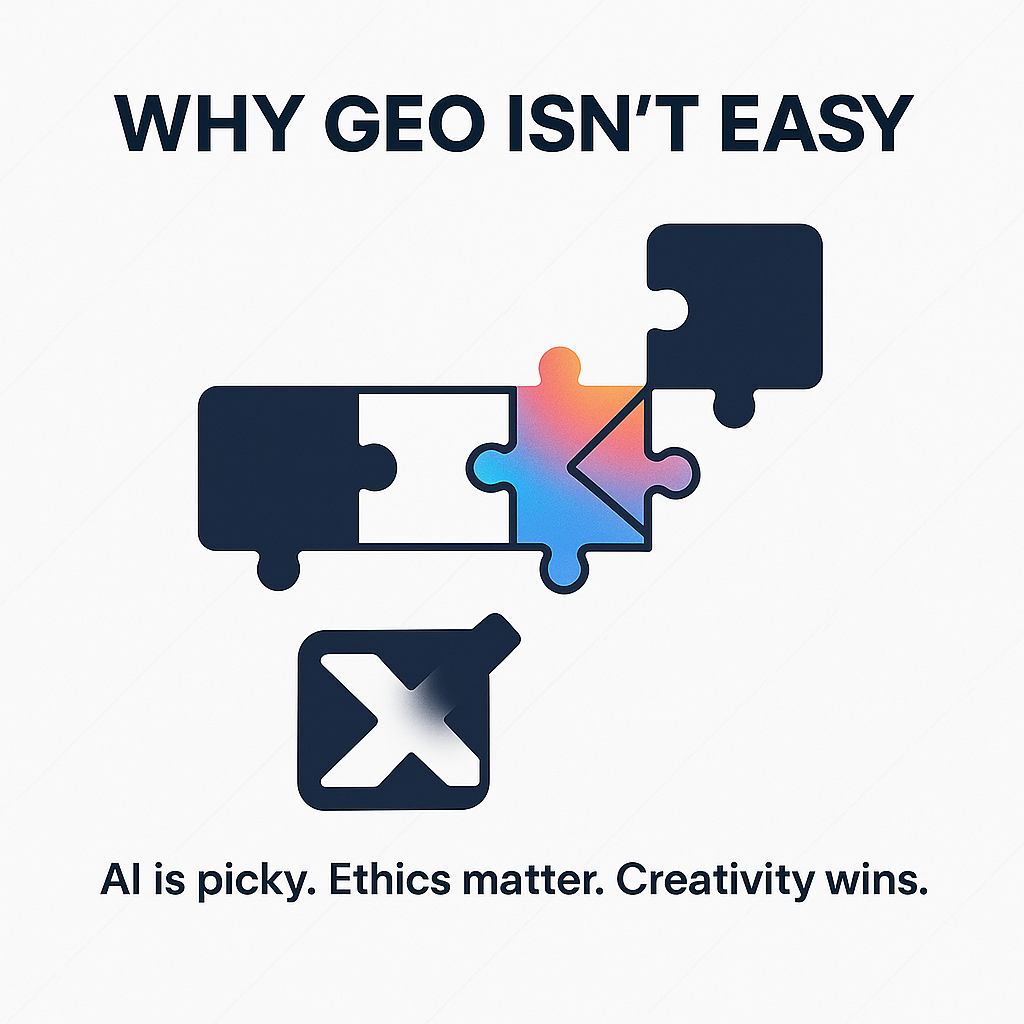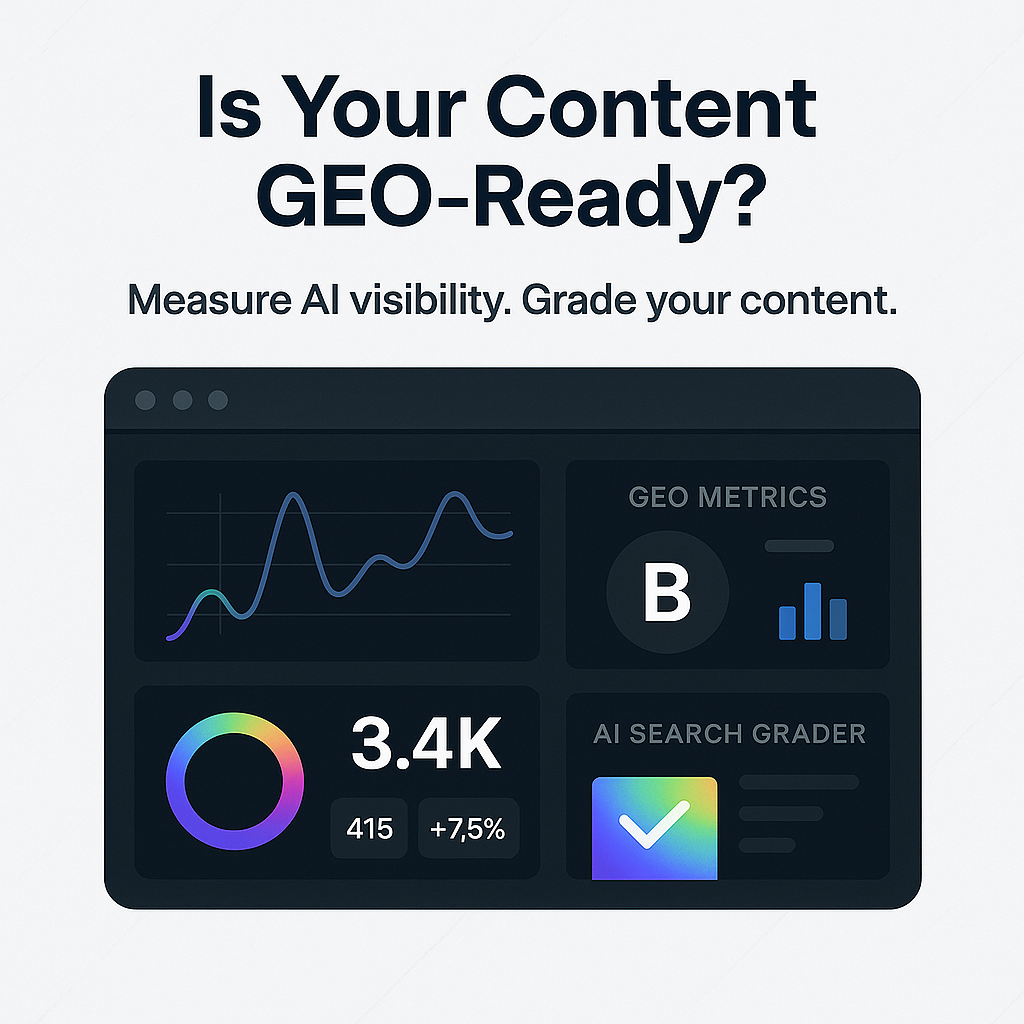
SEO Specialist
.jpg)
Generative Engine Optimization (GEO) is about getting your content seen by AI-driven search engines. Unlike traditional SEO which improves rankings on search engine result pages, GEO gets your content in AI-generated answers. As AI changes how we search online, mastering GEO is key. In this post we’ll cover what GEO is, how it’s different from SEO and why it matters.

Generative Engine Optimization (GEO) is a game changer in digital marketing to get your brand visible in AI-driven search platforms. Unlike traditional search engine optimization which is all about rankings in search engine results pages (SERPs), GEO optimizes content for AI-generated responses. This means crafting content that AI models can recognize and interpret easily, so your brand gets visible in AI-generated results.
GEO is important especially as AI-driven search engines change how we search and engage with content. Building and maintaining brand authority and credibility gets your brand visible in these emerging search platforms through GEO.
As AI-generated responses become more common, the significance of generative engines in 2025 is that they will fundamentally change the search landscape, so GEO is a must for businesses to stay ahead.
To understand the impact of Generative Engine Optimization, you need to understand how it relates to traditional SEO. Both are about getting content visible, but they do it differently. Traditional SEO is about improving rankings in search engine results pages (SERPs) through keyword optimization, backlinks and on-page SEO techniques.On the other hand, GEO is about optimizing content for AI-driven generative models, prioritizing quality and context over traditional search engine formats. While traditional SEO practices still apply, GEO is key to getting and keeping user attention on AI-driven platforms.
GEO is about content recognition by AI models, so the content must be structured and presented in a way that these models can recognize and use to generate accurate responses. Understanding the alignment and differences between GEO and traditional SEO helps you optimize content for both traditional and AI-driven searches, so you have a complete online presence.
Despite the differences, GEO and traditional SEO have some common ground:
Quality content is the foundation for both GEO and SEO. Delivering relevant and valuable content gets user engagement and meets user needs and preferences in both strategies. This shared focus on quality means content distribution that resonates with the audience, regardless of the search platform you’re targeting.
Generative Engine Optimization differs from traditional SEO in many ways. Unlike traditional search engines that list ranked pages based on keyword relevance and backlinks, AI-driven engines generate comprehensive answers to user queries. This shift means focusing on context and relevance, not keyword stuffing that was popular in traditional SEO.
Another big difference is how GEO optimizes content for AI-driven models. While traditional SEO aims for high rankings in search engine results pages, GEO is about getting content recognized and interpreted by AI models. This means creating well-structured, contextually rich content that AI engines can use to generate accurate and informative responses.

Generative AI engines are the heart of GEO. These engines create new content based on learned patterns from massive datasets, including books, articles, websites and other online content. Using advanced machine learning techniques, generative AI models produce human-like responses that match user intent, providing comprehensive and contextually rich answers to user queries. Generative engines prioritize content.
Notable generative AI models include:
These models are trained to generate data and produce accurate and comprehensive responses, changing how information is presented and consumed.
The initial hype around AI-driven search engines has given way to a deeper understanding of what they can do. Using platforms like Reddit and Quora allows content creators to influence large language models (LLMs) and shape community sentiment. This interaction between user-generated content and AI algorithms is the dynamic nature of generative AI engines and their role in modern search.
Generative Engine Optimization has many benefits, primarily by getting your website visible on AI-driven search engines. This increased visibility means more chances of being found by potential customers, so more organic traffic to your website. GEO is designed to improve search rankings and brand visibility, so content remains relevant and engaging for users.
Engaging with user-generated content can further boost credibility and interaction with AI platforms. By providing more relevant content through better keyword targeting, GEO can increase source visibility, improve user experience, leading to higher conversion rates and better engagement.
Updating content regularly is key to staying visible in AI-driven searches, as AI systems prioritize accurate and well-researched information.
The ultimate goal of GEO is to increase organic traffic, brand awareness and user experience. By using generative AI tools and techniques, you can deliver a more personalized browsing experience, better engagement and higher conversion rates.

While the benefits of GEO are clear, implementing it comes with its own set of challenges. One big challenge is the complexity of natural language processing and understanding generative engines. This means marketers need to be flexible and creative, constantly adapting to the evolving demands of AI-driven platforms.
Ethical considerations also play a big role, especially when incorporating user-generated content into GEO strategies. Over-reliance on AI may stifle human creativity, so you need to balance AI-driven and human-generated content. Also, integrating visual and interactive elements like infographics and quizzes can enhance user engagement and mitigate some of the GEO challenges.
Optimizing content for GEO involves several steps. The first step is comprehensive keyword research, which helps you understand market trends, target audience and competitors. This research ensures content is aligned with current search behaviors and user intent.Creating content that is well-structured and relevant is another key step. This means presenting new information that sparks curiosity and engages readers.
Using structured data and schema markup is important for content visibility and providing context for AI engines. This helps AI models to understand and index the content better.
Following these steps allows businesses to optimize their content for both generative engines and traditional search engines, so they have a complete online presence.
Holistic keyword research is the foundation of GEO. This involves understanding the market, target audience and competitors, and content type analysis. Using AI-powered tools like SEMrush’s AI toolkit can boost keyword research by finding trending keywords and analyzing user search habits, including semantic search.
These tools help in finding relevant keywords, so content is aligned with user intent and search behavior. Conducting holistic keyword research allows businesses to create content that resonates with their audience and improves search rankings.
Creating high-quality content is key to getting good rankings on generative AI platforms. This means creating content that directly meets the needs and intent of users, so it’s well-structured, high quality and contextually relevant.
Adding visual and interactive elements like infographics and quizzes can boost user engagement and website content visibility. Focusing on content quality and presentation means a business’s content stands out and engages both human readers and AI engines.
Structured data and schema markup is important for GEO. These elements increase content visibility by providing context and structure for AI engines, so they can understand and index the content better.
Using structured data testing tools can verify the accuracy and completeness of schema markup, so AI models can use the content. Adding structured data enhances a business’s content performance on both traditional and generative search engines.

Measuring GEO is important to understand its effectiveness and make adjustments. There are many measurement tools to measure different aspects of GEO and SEO. Adding generative AI as a lead source in CRM systems can give unique insights into GEO performance.
Google Analytics 4 and Google Search Console are great tools to analyze user interaction, traffic sources and content engagement, so you can get metrics like keyword rankings and click-through rates. Using these tools gives businesses a complete view of their data and GEO strategies.### AI Search Graders
AI Search Graders like HubSpot’s AI Search Grader are designed to grade a website’s content for AI-powered search engines. These tools evaluate content quality, structure and relevance so brands can improve their performance in AI-driven search results.
The AI Search Grader generates prompts, checks brand appearance percentage and assesses average ranking, so you can get insights into brand visibility and performance. By adding structured data, you can enhance AI comprehension and indexing and improve your GEO efforts.
Analyzing organic search metrics is important to measure the success of GEO. Metrics like search volume, user engagement, organic search traffic and conversion rates give you insights into content performance and user behavior.
Tracking these metrics allows you to gauge interest and potential traffic for specific keywords, understand content retention and measure the success of your GEO in generating desired user actions. This data-driven approach ensures continuous improvement and optimization of content.
The future of Generative Engine Optimization is looking big. As enabling ai algorithms get better, they will provide more precise and detailed answers to user queries. This will make delivering comprehensive answers the norm in search results and change how users find information.
GEO will become part of digital marketing strategies, leading the way for the future of digital engagement as a leading digital marketing agency. Maintaining featured snippets and ensuring content extraction accuracy will be key as these are the primary sources of information for AI responses.
AI answer inclusion rate and attribution frequency will be important metrics, so you know how often AI systems recognize and credit your content in generated responses. Stay ahead of these trends and your content will remain relevant and competitive in the digital landscape.
In summary, mastering Generative Engine Optimization is crucial for businesses to succeed in the AI-driven search landscape of 2025. GEO is about optimizing content for AI-generated responses, increasing brand visibility and user engagement. By understanding the differences between GEO and traditional SEO, using advanced AI tools and implementing effective optimization strategies, you can stay ahead.
As we move forward, GEO will only get more important, so it will be a key part of any digital marketing strategy. Embracing the future of GEO and adapting to advancements in AI algorithms will ensure long-term success and relevance in the digital world.
Generative Engine Optimization (GEO) increases brand visibility in AI-powered search engines by optimizing content for AI-generated responses. This is key to your online presence in a more automated digital world.
GEO is different to traditional SEO by prioritizing content recognition by AI models and quality and context over search engine rankings and keywords. This means producing meaningful content that resonates with AI-driven systems.
GEO gets your website visible on AI-powered search engines, increases organic traffic, user engagement and conversion rates. It all adds up to a better online presence.
GEO presents challenges like natural language processing, ethical considerations and the need for flexibility and creativity in strategies. These need to be carefully considered to work.
To measure your GEO performance use tools like Google Analytics 4 and Google Search Console to track user interactions and traffic sources. Also use AI Search Graders to grade your content for AI-driven search engines.